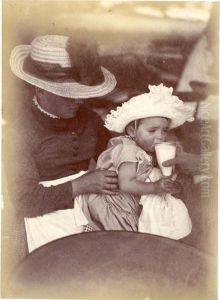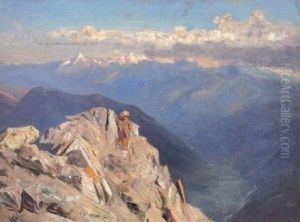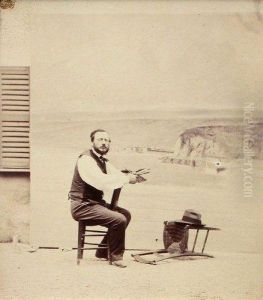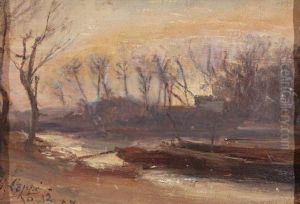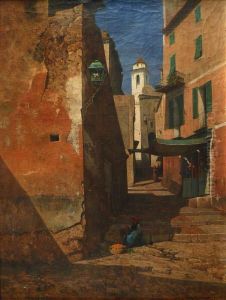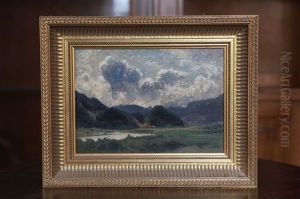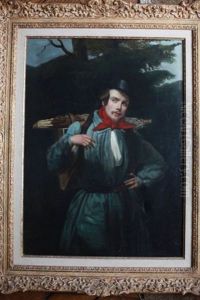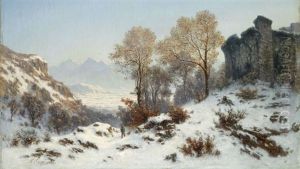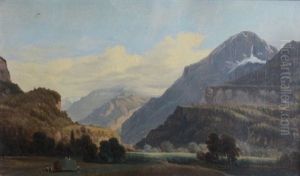Gabriel Loppe Paintings
Gabriel Loppé was a notable French landscape painter, photographer, and mountaineer, born on August 12, 1825, in Aix-les-Bains, Savoie. His artistic journey began under the influence of the Barbizon school, which emphasized painting nature in its natural state. He was particularly known for his dramatic Alpine landscapes, which he often captured through both his paintings and photographs.
Loppé's fascination with the mountains was not limited to his art; he was an avid mountaineer and integrated his climbing experiences into his work. In 1865, he was part of the team that made the second ascent of the Matterhorn, just one week after Edward Whymper's team first summited the peak. It was during this ascent that Loppé created one of his most famous paintings, 'The Matterhorn struck by lightning', showcasing his ability to capture the sublime and treacherous nature of the Alps.
Throughout his career, Loppé exhibited his works at various salons and was awarded several honors, including the French Legion of Honor in 1879 for his contributions to art and mountain culture. He traveled extensively throughout the Alps, painting numerous scenes that reflect the beauty and grandeur of the mountainous terrain. His works are characterized by the use of dramatic lighting and meticulous attention to detail, attributes that have made his paintings highly sought after by collectors and enthusiasts of Alpine art.
Gabriel Loppé passed away on October 10, 1913, in Paris, leaving behind a legacy as one of the key figures in 19th-century French landscape painting and mountain art. His works continue to be celebrated for their unique blend of artistic skill and adventurous spirit, offering a window into the sublime landscapes of the European Alps during the golden age of mountaineering.




